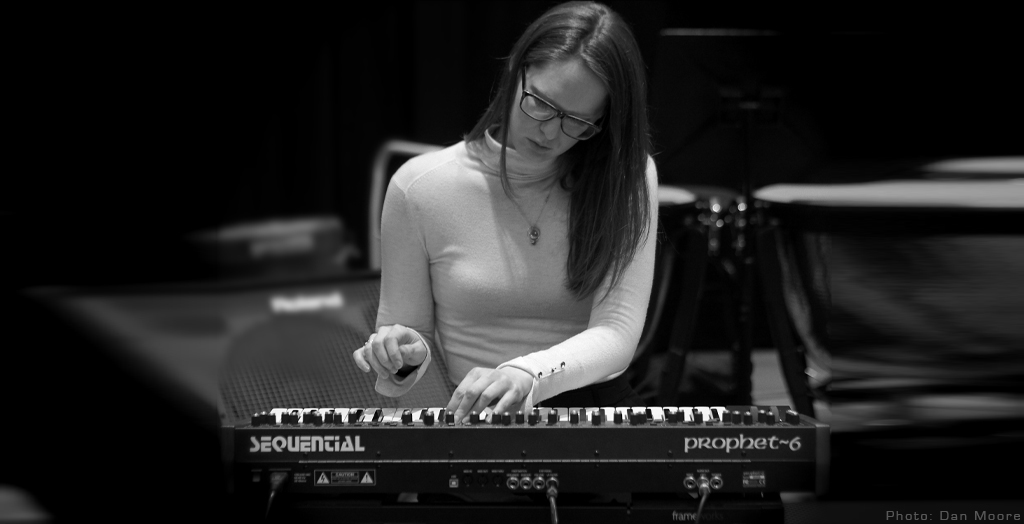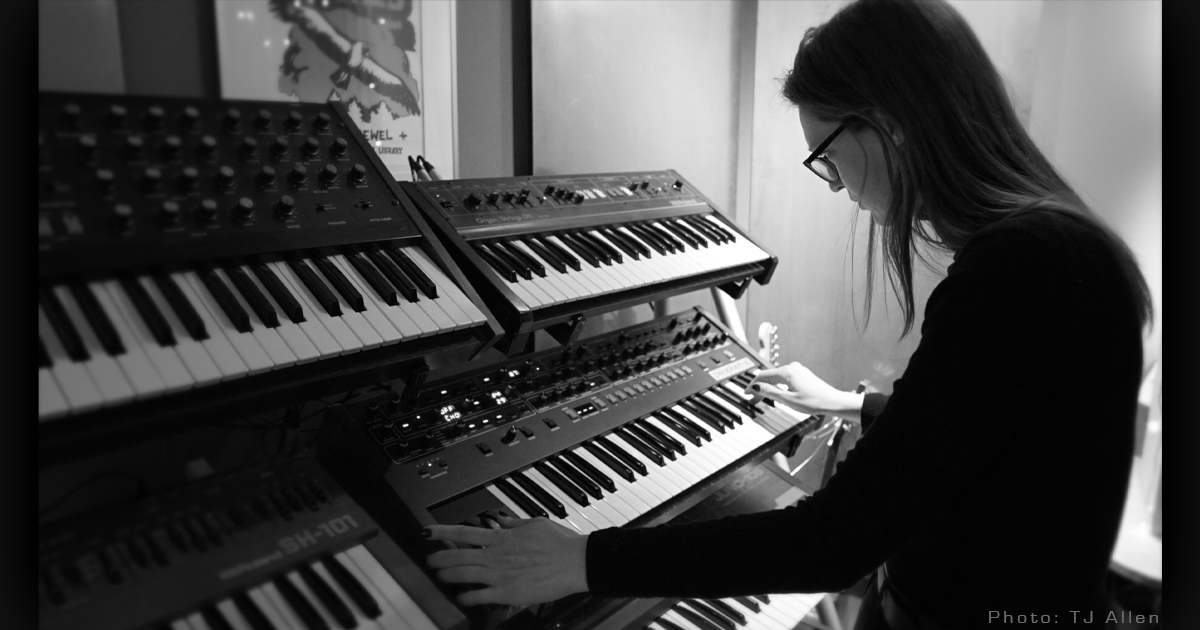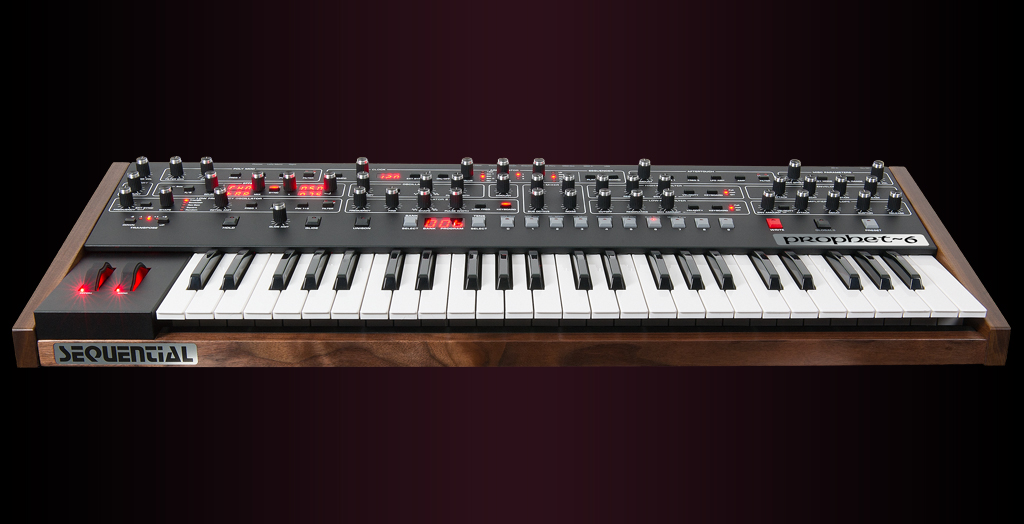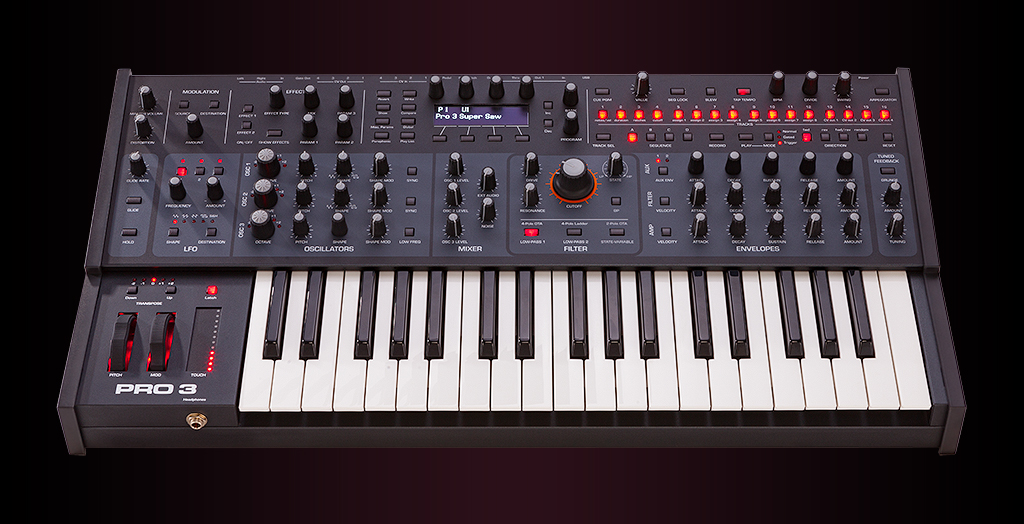
Featured Artist Hazel Mills
Gear Used
HAZEL MILLS – FEATURED ARTIST INTERVIEW
Hazel Mills is a Bristol-based musician/songwriter who has toured the globe across multiple genres, with artists including Florence + The Machine, Dave Rowntree (Blur), Goldfrapp, Birdy, Hannah Peel and The Will Gregory Moog Ensemble. Alongside her Classical roots, Hazel’s pop sensibilities and passion for 1960’s American minimalism, analog synths, and found sound feed into both her performance and her writing. Hazel is currently on tour with Christine and The Queens and using a Sequential Pro 3.
(Sequential) How did you first get started with music? Was it nature or nurture for you: Were you a self-starter or was it something that you grew into?
(Hazel) A bit of both. I was Classically trained in piano from the age of 6 (and later voice), but as I grew older, pop songs and artists who loved to really experiment with sound lured me into a broader realm. Then when I came to truly understand synthesis, a whole other world opened up for me. No doubt my roots are still a part of what I do though.
It seems that some musicians have a sort of “eureka” moment in their early years where the light bulb comes on and they realize “This is what I need to be doing.” Do you recall anything like that for you?
There was an occasion where I had about a 3 month break from playing music, and started to feel quite depressed, physically and mentally. The realisation that it was because I needed music for my health was a eureka moment of sorts, or just a stark reminder. I’ve also had the occasional sudden realisation while I’m performing (particularly when playing to thousands of people) where it dawns on me how lucky I am to be doing what I do, and how surreal this job can be (like an outer body experience).
Tell us about your first synth!
The first synth I owned was a Nord Lead 2, but it wasn’t until I later borrowed a Roland SH101 that I really learned what synthesis is. The Nord sounded great and I loved that you could split and layer sounds, but the SH101 was simple, intuitive and so emotive. Just very visceral and performative. I ended up regularly using it (and later an SH09) when performing with Will Gregory for its character and portability (flipping octaves mid section/phrase was a regular occurrence, especially when we played Wendy Carlos style Bach).
Do you usually design your own sounds? If so, how do you approach that?Do you have a process?
Yes, with synths, most of the sounds I use are ones that I design from scratch. I’ve really come to love the process of sculpting a sound from a single, static oscillator. You really get to know the character of a synth by breaking it down to its simplest form and building up. I’ll either start off with an idea in my head and know beforehand what I want it to sound like, or I go in with a more exploratory mindset and see what boundaries I can push. I also enjoy building instruments from found sound, whether its a percussive kit from knocking objects around me, a melodic instrument from tapping, plucking or bowing something, or even sounds from my travels. I like to manipulate and layer them so they are almost unrecognisable.
What kind of things get you excited about an instrument?
If its pure sound is beautiful and it feels good (and natural) to play, then I’m happy. Elements that elevate the performative qualities, like aftertouch and velocity (and even MPE), can also be a bonus with electronic instruments. An analog synth with MIDI capabilities can be great as sequencing and modulation possibilities are then not restricted to what the instrument has (i.e. a computer can extend its capabilities) but it still has the personality of an analog instrument. If we’re talking acoustic instruments, I love the feeling that a piano is singing right back to me and the natural vibrations of the sheer mechanics.
When you get a musical idea how do you go about developing it? Can you give us an example?
Different ideas inspire me to follow different threads. If I’m working in the box, I love the flexibility of Ableton Live with an early seed of an idea, as you’re not tied to a linear timeline, structure, tempo etc. This is where the songs “Enclosure” and “Hold The Water” from my EP The Embrace both began life. The former was based initially around a loop of the opening plucked sound (which I used one of the built in probability MIDI effects to vary the rhythm of). I usually start in session view (auditioning different sections, section lengths and structures), then record a structure into arrangement view in real time, before moving it all over to Pro Tools to develop/finish. On the other hand, there are many songs that were born from me just sitting with an instrument, playing and crafting as I go along. My track “The Embrace” started as a Prophet and vocal duo – I didn’t actually record/demo the song for quite a long time but would just refine the main part in real time, incorporating counter chords and melodies within those limitations (much of the synth you hear is a single pass/performance on a prophet 5). This approach usually leads to then layering up more sounds on top. In this case, this began with the beats, which I created from various found sound samples, and foley from a 1960’s radio play of Brave New World (test tube and machine clinking from a laboratory scene).
Do you have certain musical ideals? Certain things that you strive for?
Authenticity and emotional fulfilment perhaps. These days I don’t try to determine a particular sound or style, but usually follow my instinct. That can often lead to allowing “imperfections” and human qualities to remain, something which I’m a fan of in electronic music. Moving forward I do have a desire to give myself more permission to allow even the most bonkers or inappropriate ideas to come out, unfiltered, uninhibited. Future Hazel can worry about whether they’re unusable or not.
Generally speaking, are you happier in the studio or on stage?
Both are different types of happiness for me. Studio world is the calm, contented kind of happiness. Lasting fulfilment. Chipping away at things with a hot cup of tea. The stage is the more adrenaline fuelled excitement. Both are wonderful. When I’m performing my own material, perhaps it’s a combination of the two.
What are you listening to these days?
I’ve actually recently been unconsciously favouring podcasts over music. Many are music related (e.g. My Forever Studio, Why We Bleep, Sodajerker, Song Exploder, Hanging Out with Audiophiles), but some cover broader themes, like well-being/life style/health/magick (Feel Better, Live More, Bonfire Babble, No Such Thing As A Fish – this one is hilarious). With music, I currently drift between contemporary and/or slightly leftfield pop (e.g. Caroline Polachek, Serpentwithfeet, Grizzly Bear), older popular music that is heavy on the vocal harmonies (e.g. Crosy, Stills & Nash, Fleetwood Mac), and longer form instrumental music (e.g. Ryuichi Sakamoto, Nala Sinephro, James Holden).
What kinds of things inspire you — musically or otherwise. Has this changed much over time?
Musically, the things that have really stuck with me over the years are pop music from the 80s & 90s to present, French Impressionist piano music (Debussy & Ravel), 1960s American Minimalism (Reich, Riley), and Musique Concrete (from Delia Derbyshire & Pierre Schaeffer to contemporary found sound artists). I’ve always loved a bit of theatre visually speaking and that remains, whether that’s a striking image, set design, or the physical movement of a musical performance (as long as it feels genuine). Most recently, I’ve also been feeling inspired by collaboration. Something I often found difficult in the past, but am really embracing (especially with a project I’m working on with artist Cate Brooks). I’m finding letting go of the controls and going with whatever happens very liberating.
Do you have a musical bucket list?
I tend not to, I just take each opportunity as it arises and feel grateful for every one. I suppose I’ve technically ticked off a few already in the live performance domain (e.g. playing at Hollywood Bowl and Sydney Opera House,), so perhaps it would be more like a personal “to do”s in relation to my own music.
What made you choose the Prophet-6?
I immediately fell in love with the Prophet-6 when I first played one (when I popped over to my friend/fellow keyboard player Georgie Ward to try hers). I played with it in manual mode for an hour and the immediacy of the layout coupled with the beauty of the raw sound really grabbed me.
How are you using it?
In every way possible. It can be both a functional synth and a creative synth. I love to create simple, slightly wonky lead sounds (2 sawtooth’s detune with LFO-pitch modulation on both) and sweeping pads, but also love using slop or vintage mode on the sequencer or arpeggiator. I’ve also got a lot of use out of its more textural possibilities where pitch is more ambiguous (the poly mod and self-oscillating resonance on the filter are great for this), e.g. in my cover of Japan’s “Ghosts”. It’s great in the studio and on the road (I most recently used it on tour with Blur’s Dave Rowntree and Hannah Peel).
What’s one of your favorite things about it?
It has as much character as a vintage synth (both sonically and visually) but with the reliability and portability of a modern synth.
Any interesting Prophet-6 tricks or techniques you’d like to share?
I love cranking up the resonance on the LPF and using it as another sound source, e.g. tuning it to a 5th above osc 2 (with the cut off), then tuning osc 2 up a 5th – this can give you quite a hauntingly broken organ sound (but lots of variation in character depending on the exact tuning and level of each component). The same sound with a short envelope shape can create some wonderfully clangy percussive sounds (especially when diving into the polymod section on top of this). I’ve also recently been enjoying really subtle modulation of the wave shape using osc 2 as in LFO mode as the source, and subtle use of the stereo panning on a sequence or arpeggiator.

LINKS


